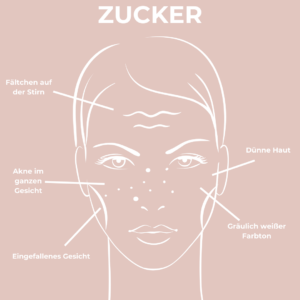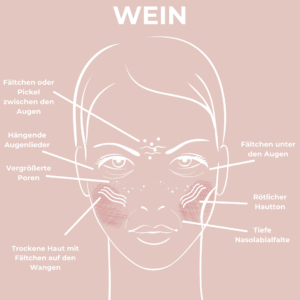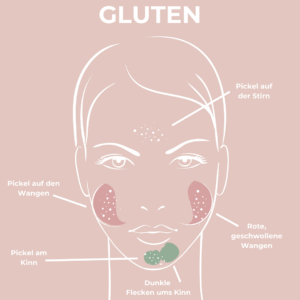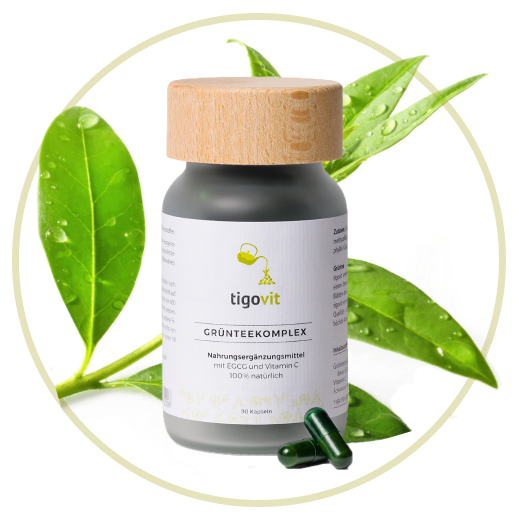Beautiful, radiant skin is more than just a question of skincare products - it starts inside us, in our gut to be precise. This organ not only influences our digestion, our mood and our immune system, but also has a major influence on our skin via the so-called Gut-skin axis have a decisive effect on the appearance of our skin. In the book "Younger skin starts in the gut" (Young people's skin begins in the gut) Dr Nigma Talib explains how our Nutritional habits are literally written on your face. According to Talib, our preferences for sugar, gluten, alcohol and dairy products are often recognisable by specific features in our skin and can be influenced by the interaction of Gut health and Skin microbiome are influenced. In this article, you will find out how the skin communicates with the gut and which practical nutrition tips and skin care measures ensure a fresh, youthful complexion.
The gut-skin axis: how the gut influences the skin
The intestine is more than just a digestive organ. It has its own ecosystem consisting of trillions of bacteria, fungi and other microorganisms - the Microbiome. These microbes not only help with digestion and nutrient absorption, but also play a central role in the immune system and the regulation of inflammation in the body. If the gut microbiome gets out of balance, this can trigger inflammatory processes that can spread to the skin via the gut-skin axis and lead to problems such as acne, redness, dryness or premature skin ageing.
The gut-skin axis functions as a communication pathway that is characterised by transmits biochemical signals of inflammation and stress from the gut to the skin. The skin microbiome - the natural microbial world of the skin - also plays a decisive role here. If the skin flora is disturbed by poor gut health, the skin becomes more susceptible to irritation and skin diseases. A balanced diet and Probioticsboth in the food and in the probiotic skin carecan help to strengthen the microbiome in the gut and on the skin.
The four face types according to Dr Talib
In her book, Dr Nigma Talib describes four characteristic Face typeswhich are linked to specific eating habits and their effect on the skin. According to Talib, the condition of the skin is therefore a reflection of the diet. Show me your face and I'll tell you what you eat.
1. the "sugar face"
Sugar is known for its pro-inflammatory properties. According to Dr Talib, those who regularly consume sugar could
You can recognise features such as acne, fine lines and a tired complexion on your face. The reason: sugar causes glycation of the skin proteins collagen and elastin, which contributes to the formation of wrinkles. In addition, sugar increases sebum production and worsens the skin microbiome, which can promote acne and clogged pores.
What to do?
Reduce sugar and processed carbohydrates.
Use probiotics, probiotic skin care and Anti-inflammatory foods such as berries, nuts and green vegetables.
Ensure a stable Blood sugar curve due to high-fibre, plant-based foods.
 2. the "milk face"
2. the "milk face"
According to Talib, dairy products such as cheese, yoghurt and milk can promote skin problems as they contain hormones and growth factors that can promote inflammation and increase the risk of acne. A "milk face" often manifests itself with puffy eyelids, dark circles under the eyes, enlarged pores and dull skin.
What to do?
Avoid cow's milk products and try alternatives such as almond, oat or coconut milk.
Integrate probiotic foods such as sauerkraut, kimchi and kombucha to strengthen the microbiome.
Use targeted probiotic skin care to balance the skin flora.
3. the "wine face"
Alcohol, especially red wine, can have a major impact on the appearance of the skin. Alcohol draws fluid from the body, dilates the blood vessels and promotes inflammation, resulting in a "wine face": red cheeks, visible veins, dilated pores and a tired complexion.
What to do?
Limit your alcohol consumption and make sure you drink enough water and unsweetened teas.
Add anti-inflammatory foods such as turmeric and green leafy vegetables to your diet.
Use skincare products with antioxidant ingredients such as vitamin C.
4. the "gluten face"
Many people have an increased sensitivity to gluten, a protein in wheat that can promote inflammation in the gut. Gluten face" is characterised by a puffy face colour, red cheeks and swollen skin.
What to do?
Try a gluten-free diet and replace wheat products with gluten-free alternatives such as buckwheat or quinoa.
Combine a Gut-friendly diet with prebioticsthat support "good" bacteria in the gut, such as garlic, leek and asparagus.
Keep skin care simple and avoid irritating substances - probiotic skin care can also be helpful here.
Nutrition and complexion: how to look after your gut and skin
What we eat has a direct impact on the appearance of our skin. Whilst sugar, dairy products, alcohol and gluten can be problematic, there are many Nutrient-rich foodsthat promote both gut health and skin health. Antioxidants, unsaturated fatty acids, vitamins and minerals are valuable for skin regeneration while strengthening the gut microbiome. Here are some important nutrients and their benefits:
- Dietary fibre (in oats, chia seeds, linseed): promote digestion and serve as food for the "good" intestinal bacteria.
- Vitamin A and C (in carrots, oranges, peppers): support collagen production and protect the skin from free radicals.
- Omega-3 fatty acids (in salmon, walnuts, chia seeds): have an anti-inflammatory effect and strengthen the skin barrier.
- Polyphenols (in berries, fresh vegetables, olive oil): strengthen the microbiome and contribute to a healthy complexion.
Probiotic skincare: support for the skin microbiome
Probiotic skin care products contain living microorganisms such as Bacillus subtilisor their components, which are the Skin microbiome and strengthen the natural skin barrier. By supporting the skin microbiome, probiotic products can alleviate skin irritations and prevent skin blemishes. Probiotic products are a valuable addition, especially for sensitive skin types or skin problems such as acne or eczema.
Some recommended probiotic ingredients are:
- Bacillus subtilisregenerates the skin microbiome and balances the skin's pH value
- Lactobacillus fermentSoothes and regenerates the skin.
- Bifidobacteria extractsstrengthen the skin barrier and increase moisture retention.
- Lactic acidis a natural component of the skin and helps to balance the pH value and smooth the skin.
Tips for healthy skin inside and out
- Establish a healthy dietReduce sugar, gluten and dairy products to strengthen the microbiome and avoid inflammation.
- Refrain from excessive alcohol consumption: Rely on water and tea to moisturise the skin.
- Integrate pre- and probiotics into your diet: Foods such as sauerkraut, kimchigarlic and onions promote the growth of good bacteria.
- Pay attention to gentle skin careUse products that do not disrupt the skin microbiome and incorporate probiotic skincare to strengthen the skin flora.
- Reduce stressStress has a negative effect on intestinal health and can lead to skin impurities. Focus on Relaxation techniques such as meditation or yoga.
Conclusion: Beauty begins in the gut
The interaction of Gut health and skin shows how closely our inner balance is linked to our external appearance. The intestinal-skin axis enables us to achieve a healthy appearance through a conscious diet and a good care of our microbiome to reduce skin problems and achieve a radiant complexion. By understanding our skin as a reflection of our diet and lifestyle habits, we can make great progress towards a healthy complexion with small changes in our everyday lives.
The realisation that our eating habits are literally written on our faces is impressive: Beauty begins in the gut.


 2. the "milk face"
2. the "milk face"



